Do you have a question about the Honda CBR600RR 2007 and is the answer not in the manual?
Key information and recommendations for safe motorcycle operation.
Guidelines on using and modifying accessories for safety.
Information on the location and purpose of safety labels on the motorcycle.
Diagrams showing the location of all motorcycle controls and indicators.
Explanation of the function of various gauges, indicators, and displays.
Detailed descriptions of individual controls and their functions.
Guidance on evaluating personal and motorcycle readiness for riding.
Importance of developing riding skills and recommended training courses.
Checks to perform to ensure the motorcycle is safe for riding.
Checklist for essential inspections before each ride.
Information on weight capacities and safe loading practices.
General advice and precautions for safe motorcycle operation.
Procedures for safely starting and stopping the engine.
Explains the six-speed transmission and proper shifting techniques.
Guidance on using front and rear brakes effectively and safely.
Instructions on how to park the motorcycle securely.
Advice on protecting the motorcycle from theft.
Important considerations for carrying passengers or cargo safely.
Recommended service intervals and tasks for maintaining the motorcycle.
Section for recording maintenance performed on the motorcycle.
Steps for preparing the motorcycle for maintenance tasks.
Detailed instructions for performing various maintenance tasks.
Guidance on proper procedures for storing the motorcycle.
Recommendations for safely transporting the motorcycle.
Tips for environmentally responsible motorcycle ownership.
General advice for handling common riding problems.
Steps to take if the engine temperature rises abnormally.
Actions to take when the low oil pressure indicator activates.
Troubleshooting steps for blown fuses in the electrical system.
Advice on safety, inspection, and handling after an accident.
Procedures to follow if the motorcycle key is lost.
Guidance on dealing with a low or dead motorcycle battery.
Recommendations for the initial period of motorcycle operation.
Information on systems designed to reduce exhaust emissions.
Explanation of the catalytic converter's function and maintenance.
Information on the use of gasoline blended with oxygenates.
Information on obtaining official Honda service and owner manuals.
Details on the types of warranties covering the new Honda motorcycle.
Procedures for obtaining warranty repairs and service.
How to contact Honda for questions or feedback.
Information on dealer services and support.
Benefits and information about the Honda Rider's Club.
How to report potential safety defects to NHTSA and Honda.
Key information and recommendations for safe motorcycle operation.
Guidelines on using and modifying accessories for safety.
Information on the location and purpose of safety labels on the motorcycle.
Diagrams showing the location of all motorcycle controls and indicators.
Explanation of the function of various gauges, indicators, and displays.
Detailed descriptions of individual controls and their functions.
Guidance on evaluating personal and motorcycle readiness for riding.
Importance of developing riding skills and recommended training courses.
Checks to perform to ensure the motorcycle is safe for riding.
Checklist for essential inspections before each ride.
Information on weight capacities and safe loading practices.
General advice and precautions for safe motorcycle operation.
Procedures for safely starting and stopping the engine.
Explains the six-speed transmission and proper shifting techniques.
Guidance on using front and rear brakes effectively and safely.
Instructions on how to park the motorcycle securely.
Advice on protecting the motorcycle from theft.
Important considerations for carrying passengers or cargo safely.
Recommended service intervals and tasks for maintaining the motorcycle.
Section for recording maintenance performed on the motorcycle.
Steps for preparing the motorcycle for maintenance tasks.
Detailed instructions for performing various maintenance tasks.
Guidance on proper procedures for storing the motorcycle.
Recommendations for safely transporting the motorcycle.
Tips for environmentally responsible motorcycle ownership.
General advice for handling common riding problems.
Steps to take if the engine temperature rises abnormally.
Actions to take when the low oil pressure indicator activates.
Troubleshooting steps for blown fuses in the electrical system.
Advice on safety, inspection, and handling after an accident.
Procedures to follow if the motorcycle key is lost.
Guidance on dealing with a low or dead motorcycle battery.
Recommendations for the initial period of motorcycle operation.
Information on systems designed to reduce exhaust emissions.
Explanation of the catalytic converter's function and maintenance.
Information on the use of gasoline blended with oxygenates.
Information on obtaining official Honda service and owner manuals.
Details on the types of warranties covering the new Honda motorcycle.
Procedures for obtaining warranty repairs and service.
How to contact Honda for questions or feedback.
Information on dealer services and support.
Benefits and information about the Honda Rider's Club.
How to report potential safety defects to NHTSA and Honda.
| Engine Type | 599cc liquid-cooled inline four-cylinder |
|---|---|
| Bore x Stroke | 67.0mm x 42.5mm |
| Compression Ratio | 12.2:1 |
| Induction | Dual Stage Fuel Injection (DSFI) |
| Ignition | Computer-controlled digital transistorized with 3-D mapping |
| Front Suspension | 41mm inverted HMAS cartridge fork with spring preload, rebound and compression damping adjustability; 4.7 inches travel |
| Rear Suspension | Unit Pro-Link HMAS single shock with spring preload, rebound and compression damping adjustability; 5.1 inches travel |
| Front Brakes | Dual radial-mounted four-piston calipers with 310mm discs |
| Rear Brakes | Single-piston caliper with 220mm disc |
| Front Tire | 120/70ZR-17 radial |
| Rear Tire | 180/55ZR-17 radial |
| Rake | 23.7 degrees |
| Wheelbase | 53.9 inches |
| Seat Height | 32.3 inches |
| Fuel Capacity | 4.8 gallons |
| Curb Weight | 410 pounds |
| Valve Train | DOHC; four valves per cylinder |
| Transmission | Six-speed |
| Final Drive | #525 chain |
| Fuel System | Dual Stage Fuel Injection (DSFI) |
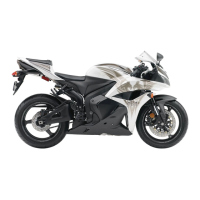
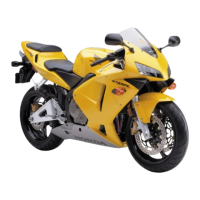
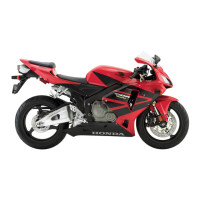
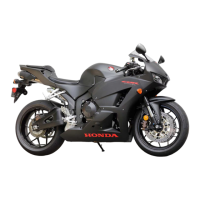

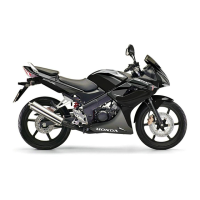
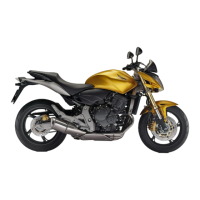

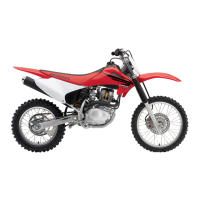
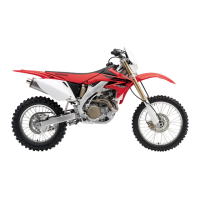
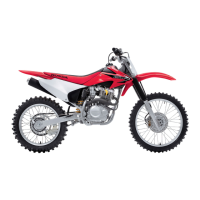
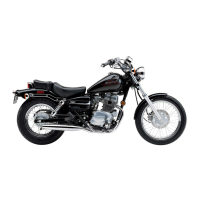
